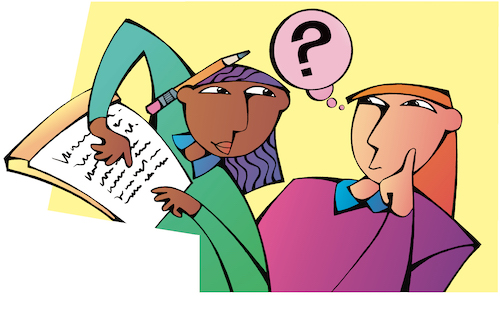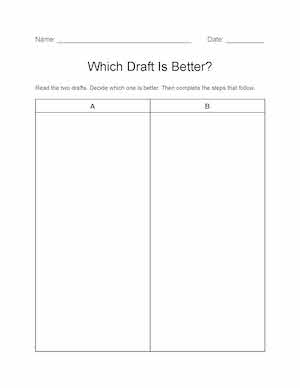
To develop new writing skills, students need something to emulate.
You can have students read models of strong writing to explore new genres and prepare to write. But did you know models can also help your students revise?
One of our favorite revision activities comes from Kelly Gallagher’s wonderful book In the Best Interest of Students.
After Gallagher's students have completed a first draft, he presents two model drafts and asks students to pick which one is better.
Students identify specific positive features from their choice and then apply the features to their own writing. This simple yet powerful activity introduces students to new craft moves and invites meaningful revision.
Featured Download: Which Draft Is Better?
Copy and paste two comparable excerpts in the activity table. Then distribute the activity and have students complete the steps.
Where can I find quality writing models?
For student writing models, try these free resources:
- Thoughtful Learning Assessment Models. This resource page is perfect for comparing models. You can find models classified by grade level, genre, and quality. Each model also includes a rubric that explains the strengths and weaknesses of the piece.
- Thoughtful Learning Student Models. This resource page includes a trove of models written by real students. The models are organized by grade level and genre.
- 826 Writing Samples. Select pieces by student writers in grades K–12. Search by grade, genre, and theme.
- Your own classroom! Create models out of writing samples from past students. You can also ask students for permission to use their models (anonymously) as mentor texts next year.
For professional writing models, try these free resources:
- New York Times Learning Network. Find mentor texts in a variety of genres.
- CommonLit. Browse the library to find readings grouped by grade level, theme, and genre.
How do I choose the right models?
Pick models that relate to the genre or skill you want students to improve in their own writing.
To start, choose one strong model and one of lesser quality so that students can pick out the differences.
After doing the activity a few times, you could choose two models of similar quality. Not having a clear winner invites healthy debate and forces students to read closely to justify their choice.
Teaching Support
Consider this support when working with models.
Level
K–12
Learning Objectives
By comparing writing models, students will . . .
- Read like writers.
- Practice close-reading strategies, including annotating and underlining.
- Identify features of strong writing.
- Apply new skills to their own writing.
- Revise with a purpose.